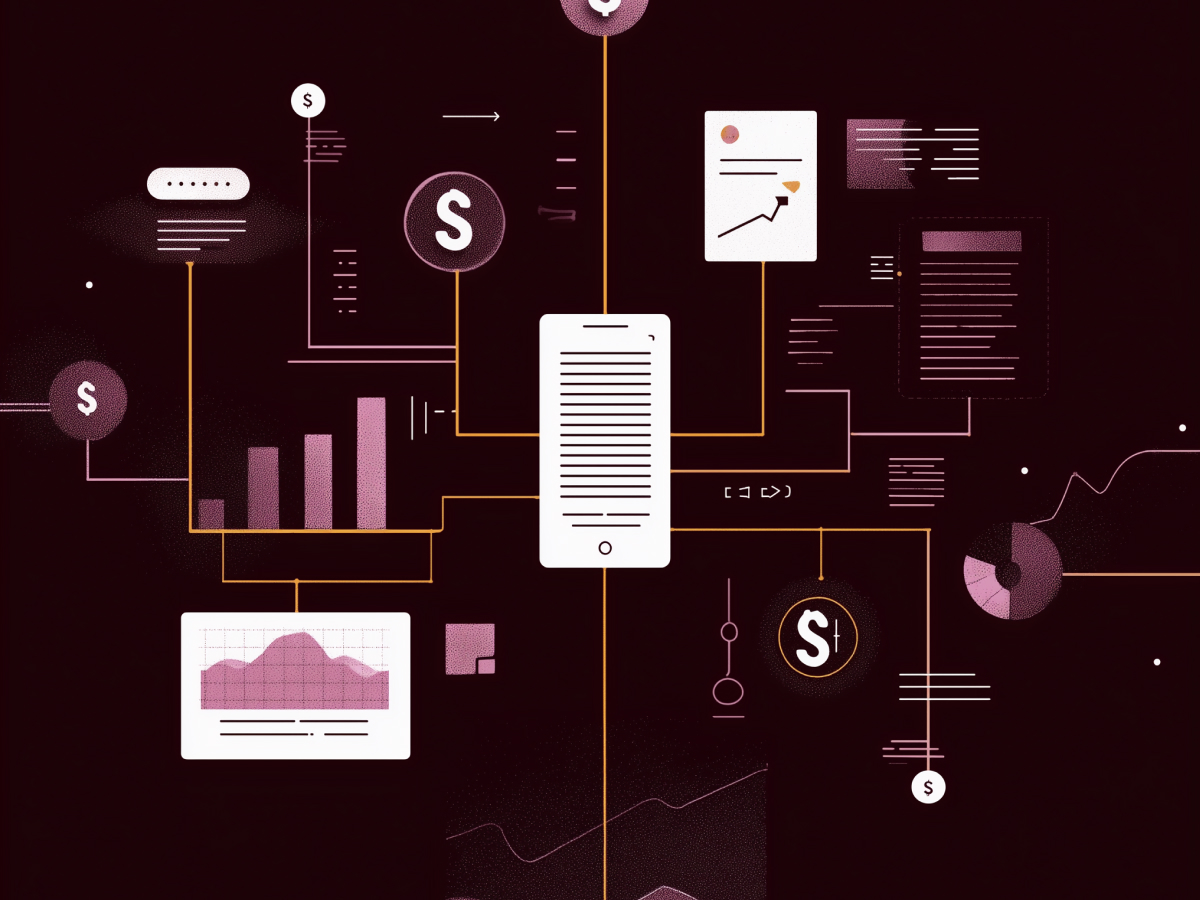Importing, transforming, and validating data from unmanaged external sources is inherently a complex process—stemming from highly variable data formats, diverse incoming data quality, and the deed for rigorous validation and transformation protocols.
Traditional ETL (Extract, Transform, Load) tools and iPaaS (integration Platform-as-a-Service) solutions fall short in handling data from external, unmanaged sources because they are primarily designed for structured, internal IT environments.
Data exchange platforms address this with specialized tools to streamline the process of importing, transforming, and validating data from numerous and disparate sources. These platforms are built to handle many different formats (CSV, XLS, PDF, etc.), so that data can be quickly integrated into business systems.
Through automating these processes, data exchange platforms greatly reduce the manual effort required, minimize errors, and make sure that data is available for decision-making as and when needed.
Moore’s Law of data exchange
Moore’s Law has driven technological advancements for over fifty years, focusing on the miniaturization of transistors on a chip, enabling exponential growth in computing power, leading to innovations from PCs to smartwatches.
In today’s data-driven world, there’s a similar principle applying to data exchange and integration. The speed, ease, and accuracy with which data is collected, exchanged, consolidated, and used are now keys to driving future innovations.
Efficient data exchange is the new frontier, akin to Moore’s Law. As organizations increasingly rely on massive amounts of data, managing and leveraging this data efficiently becomes a priority.
Fast and accurate data exchange transforms raw data into actionable insights, driving business growth and operational efficiency. This modern “law” of data exchange reinforces the pressing need for comprehensive, scalable, and powerful platforms that can handle complex data integration tasks with speed and precision, so that businesses can stay competitive in an ever-evolving market.
Mastering data import and exchange
Data import – also known as data exchange – is the safe, fast, and efficient upload of data files. It’s key for integrating data from many different sources into a single, unified system, for informed decision-making and ultimately boosting operational efficiency.
Key traits of data files for optimal import:
- Highly variable in structure and quality: Data files often differ greatly in terms of structure and quality, requiring advanced tools to handle inconsistencies and guarantee data integrity.
- External to professionally managed IT systems: Many data sources are external, coming from partners, customers, agents, and suppliers—these sources are not managed by internal IT systems, adding a layer of complexity to the integration process.
- Saved in different formats: Data files come in a broad range of formats, including CSV, XLS, and PDF, with each format requiring specific handling techniques for accurate import.
- Sourced from diverse contributors: Data is collected from end users, partners, customers, agents, and suppliers, each with unique data structures and formats.
Top six data file exchange challenges
1. Streamlining customer onboarding with smooth data integration
Loading customer data into software applications can be full of delays and complications—diminishing customer satisfaction and increasing the risk of churn.
Expertly built data exchange platforms streamline this process, so that customer data is quickly and accurately integrated into the system. This then boosts customer satisfaction while strengthening customer retention through a seamless onboarding experience.
2. Eliminating errors and delays in file uploads
Allowing users to upload data files introduces potential time delays, errors, and user complaints. Unsuccessful uploads can frustrate users, leading them to abandon the process. Data exchange platforms automate file uploads to achieve a higher level of accuracy, reducing these issues, ultimately providing a smoother user experience and retaining more users.
3. Coordinating complex data workflows
Businesses often need to manage intricate data workflows involving multiple stakeholders and systems. Smooth data exchange is key for maximizing business value. Data exchange platforms manage the orchestration of these workflows, so that data flows smoothly between different parties and systems, resulting in higher efficiency and better coordination across the organization.
4. Simplifying complex data migrations
Large IT migration projects are inherently complex, often leading to data errors, versioning issues, and time delays. Preparing data for these migrations requires extensive review and cleanup.
Data exchange platforms simplify this process by automating much of the data preparation, reducing the likelihood of errors and speeding up the migration process—so businesses can transition to new systems with minimal disruption.
5. Automating file imports for faster data collection
Periodic data collection from partners, agents, or remote employees is typically error-prone and time-consuming. Data exchange platforms automate this process, handling the mapping, formatting, cleaning, and review required for integration—reducing the burden on IT teams and making sure that data is collected and processed more efficiently.
6. Improving manual data review with smart solutions
Manual data review typically involves exception handling and approvals, making it a labor-intensive process. Human-in-the-loop processes require new approaches to data exchange management.
Data exchange platforms incorporate intelligent solutions that streamline manual reviews, so that users can quickly upload files, fill in blanks, and make mapping decisions—resulting in faster and more accurate data integration, and ultimately improving overall efficiency and reliability.
Choose purpose-built solutions over inefficient workarounds
Organizations often turn to many different workarounds to manage data import processes, but these methods typically lead to several challenges.
Hiring outside IT services is one common strategy, where external experts are brought in to handle the complexities of data integration. While this can offer a temporary solution, it typically results in high costs and dependency on third-party providers. These services can charge large fees, and any changes or updates to the data integration process may require further expenses and coordination, leading to delays.
Another workaround is using end-user templates and rules, relying on standardized templates that end users must adhere to when submitting data. While it can help standardize data inputs to some extent, it places a heavy burden on end users, who may not have the technical expertise to handle data formatting and validation. This can then lead to errors and inconsistencies in the data submitted, requiring additional cleanup efforts by the IT team.
Building custom solutions in-house is another strategy organizations use, developing bespoke tools tailored to the company’s specific data integration needs.
While this can offer a high degree of customization, developing and maintaining custom solutions requires a considerable investment of time and resources. The initial development phase can be lengthy, and ongoing maintenance demands continuous updates and troubleshooting, diverting valuable IT resources from other important projects.
Workarounds frequently lead to major data quality issues. Data errors are common, as the lack of standardized processes and tools increases the likelihood of inconsistencies and inaccuracies. High costs associated with these methods—whether through external service fees, the time investment of internal teams, or the inefficiencies introduced by data errors—make them unsustainable in the long run.
Benefits of purpose-built solutions
Purpose-built data exchange solutions offer a far more efficient and reliable approach to data integration—specifically designed to streamline, accelerate, and secure data import processes, addressing the inherent complexities of data exchange.
Here are some of the core advantages of purpose-built solutions:
- Deliver rapid and sustained ROI: Data integration platforms automate many of the manual processes involved in data integration to reduce the time and effort required to import and validate data. This helps to speed up the integration process and minimize the risk of errors, leading to more accurate and reliable data.
- Greatly reduce data errors: Automated validation and transformation processes make sure that data conforms to the required formats and standards before it is imported into the system—reducing the need for manual intervention and decreasing the likelihood of inconsistencies and inaccuracies.
- Accelerate decision-making: With faster and more reliable data integration, decision-makers have access to up-to-date and accurate data when they need it, ultimately improving the speed and quality of business decisions and driving better outcomes for the organization.
- Reduce development time and cost: Organizations can leverage pre-built, scalable platforms to avoid the lengthy and resource-intensive process of developing custom solutions from scratch. This frees up IT resources to focus on other strategic initiatives and reduces the total cost of ownership.
- Increase data usability: Purpose-built platforms typically come with advanced features for data parsing, validation, and transformation, making it easier to integrate and work with data from diverse sources—improving the overall quality and usability of the data, supporting better data-driven decision-making.
- Improve security and compliance: These platforms are designed with end-to-end security features to protect sensitive data and comply with relevant regulations—giving organizations some peace of mind.
Deciding between building, buying, or a hybrid approach
Weighing the pros and cons of building from scratch
Building a data exchange solution from scratch offers a high degree of customization but comes with a large long-term commitment. Organizations must be prepared to invest substantial time and resources into the development process—including the tool’s initial creation, as well as the ongoing development of new features as data integration needs evolve.
Regulatory changes, new data formats, and expanding business requirements require continuous updates and improvements to the system.
Maintenance is another core aspect of building from scratch. The IT team must dedicate time to support and maintain the tool, addressing any bugs, performance issues, or compatibility challenges that arise. Ongoing efforts here can end up diverting resources from other important projects, impacting the overall relative performance of the IT department.
Benefits and limits of buying solutions
Buying a data exchange solution offers a quicker path to implementation with several open-source and commercial options available. These typically come with basic functionality that can address common data integration needs, providing a ready-made platform that can be deployed rapidly, hypothetically reducing the time to value.
These solutions, however, typically come with many limitations, particularly when it comes to handling the varied and evolving needs of enterprise use cases.
Commercial products may lack the flexibility to adapt to specific business requirements, and customization options can be limited—leading to challenges in integrating the solution with existing systems or accommodating unique data formats and workflows.
Build with API-based platforms
The “build with” approach combines the best of both worlds, merging the functionality and scalability of software with the flexibility to meet specific business needs. API-based file import platforms let developers build fully customizable data file import solutions. This provides the flexibility to tailor the data integration process to the organization’s unique requirements while leveraging the infrastructure of a pre-built platform.
Developers can use APIs to drive business and data logic without having to maintain the underlying plumbing—reducing the development burden on the IT team and making sure that the solution is scalable and adaptable to future needs. Organizations can combine the customization potential of building with the reliability and scalability of commercial solutions to build a highly effective and efficient data exchange process that meets their specific business needs.
Seven primary features your data exchange platform needs
1. Simplify data parsing for seamless integration
Data parsing is the process of aggregating information from a file and breaking it down into discrete, manageable parts—making sure that each element of data is appropriately labeled and structured, facilitating its integration into broader business systems.
For instance, a CSV file containing customer information must have each field correctly identified and separated—names, addresses, phone numbers, and transaction details all need to be parsed accurately.
Granularity makes sure that data is usable and actionable, supporting accurate reporting and analytics. Advanced parsing capabilities can handle complex data structures, such as nested files and multi-level hierarchies, ensuring that no detail is lost in the import process.
2. Improve data accuracy with comprehensive validation
Data validation typically involves checking incoming data against predefined rules to confirm it matches expected formats or values. For example, dates should follow a specific format, numeric fields should only contain numbers, and email addresses must conform to standard email syntax.
Through catching discrepancies early, data validation prevents errors from propagating through the system, which can lead to faulty analysis and decision-making. This then works to reduce the need for re-uploading data, saving time and resources. Expert data validation frameworks can also handle a range of data types and validation rules for more comprehensive coverage.
3. Perfect data mapping and matching for error-free imports
Data mapping and matching covers aligning source data with a known target format to prevent import failures. For instance, if a source file uses “CustID” to denote customer identification numbers, but the target system uses “CustomerID,” mapping and matching make sure these discrepancies are reconciled.
Automated data mapping tools can identify and correct mismatches, reducing manual intervention and minimizing errors. These tools typically lean into machine learning algorithms to improve mapping accuracy over time, adapting to new data sources and formats as they arise.
4. Transform data on the fly for instant usability
Data transformation deals with making systematic changes to data as it flows into the system to meet expected or desired values—making sure that data is immediately usable without requiring users to address errors manually.
For example, transforming all date formats to a standardized structure or converting currency values based on the current exchange rates can be handled seamlessly during import.
Leveraging automation here saves time and reduces the likelihood of human error. Transformation tools can be used to apply complex business rules and logic to incoming data to make sure that it meets the organization’s specific needs and standards.
5. Optimize data ingress and egress for operational efficiency
Data In/Data Out functionality is key for the movement of data into and out of the tool, ranging from simple operations like downloading and uploading files to more complex tasks like automating imports and posting exports to external APIs.
For example, a business might need to regularly import sales data from various retail outlets and export consolidated reports to a central analytics platform.
Expert data ingress and egress capabilities align with an organization’s operational needs, supporting smooth data flow and integration across different systems and departments, ultimately making sure that data is always available as and when needed.
6. Scale your data integration performance
Performance at scale is a primary requirement for any data exchange solution. As data volumes grow, the system must support collaboration among multiple users without degrading performance—including handling large files, concurrent processing of numerous data streams, and rapid response times.
For instance, a global enterprise might have thousands of employees uploading data simultaneously from different regions. The platform must handle this load efficiently, preventing bottlenecks and making sure that data is processed in a timely manner. Scalable solutions also anticipate future growth, providing the flexibility to expand as the organization’s data needs evolve.
7. Secure and compliant data access and integration
Prioritizing regulatory alignment, data integrity, and transparency protects sensitive information and supports compliance with relevant regulations such as GDPR, HIPAA, or CCPA, typically through implementing robust access controls, encryption, and audit trails.
For instance, only authorized personnel should have access to sensitive financial data, and all access and data changes should be logged and monitored. Compliance features make sure that data handling practices meet industry standards and legal requirements, protecting the organization from potential breaches and legal issues.
Support Your ETL with integrated data import
Leverage integration advantages
Data exchange solutions complement traditional ETL tools by facilitating import and exchange of variable, unmanaged data files. While ETL tools are great at integrating structured systems and databases, data exchange platforms handle the complexities of variable data formats and external sources.
For example, a data exchange platform can collect sales data from numerous small retailers, clean and validate it, and then feed it into an ETL tool for further processing and integration with corporate databases.
This combination improves data collection capabilities, supports human-in-the-loop processes, and enables intelligent and scalable data cleaning and validation. Secure gates for external data then make sure that only verified and accurate data enters the system.
Maximize benefits with combined ETL and data exchange systems
Combining a data exchange platform with an ETL tool creates a modern data integration ecosystem, improving data usage by letting organizations manage and leverage diverse data sources.
For instance, a company can integrate customer feedback from social media platforms with internal sales data to gain comprehensive insights into market trends and customer preferences.
Adopting an integrated approach here aligns closely with the new Moore’s Law of data exchange, which emphasizes how important speed, ease, and accuracy are in data management. Organizations must leverage both ETL and data exchange platforms to tap into the full potential of their data, driving better decision-making and achieving operational excellence.
Final thoughts
Is your brand leveraging data to its fullest potential? Advanced data exchange platforms offer the agility and precision needed to transform raw data into powerful business intelligence. Are you ready to work with these tools to drive innovation and outpace competitors?
It’s time to rethink your data strategy and take the opportunity to grow your brand to new heights. The future of your market success may well depend on it.




